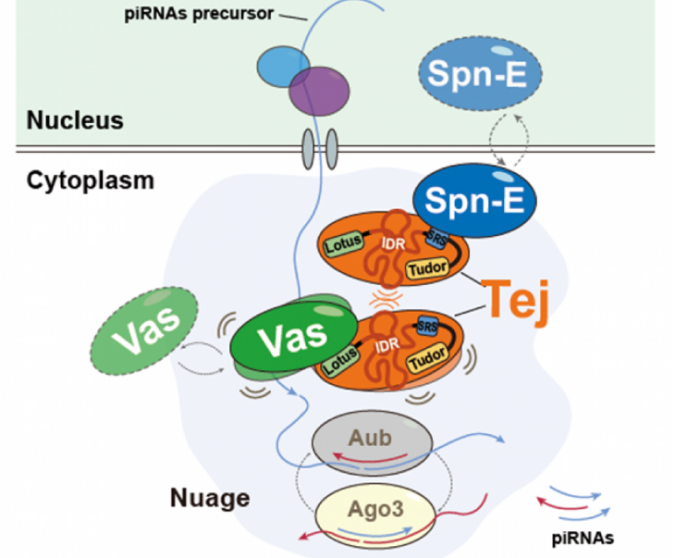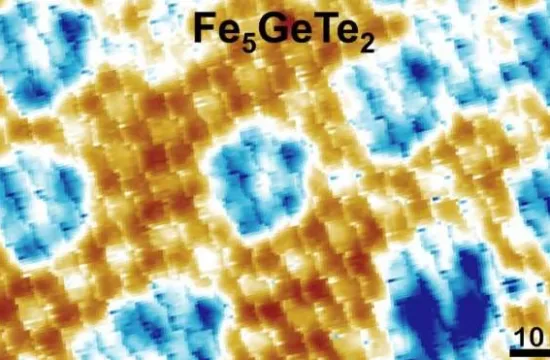Osaka, Japan – You’re likely familiar with RNA, the molecule that plays an important role in protein production and gene expression control. Perhaps you’re less familiar, however, with PIWI-interacting RNA (piRNA), a special type of RNA that protects the genome from mutations. Now, researchers in Japan have shed light on how these critical molecules are formed by the dynamics of several associated proteins in the germline of the fruit fly, Drosophila melanogaster.

In a new study published in the Journal of Cell Biology, researchers from Osaka University have clarified how the proteins Tejas (Tej), Vasa (Vas), and Spindle-E (Spn-E) contribute to the creation of piRNAs, which are found in the gonads and help protect the genome from mutations or deletions caused by transposons that may be passed on through reproductive cells.
In Drosophila, piRNAs first appear as long sequences, known as precursor transcripts, which are processed in membrane-less cellular compartments called ‘nuage’ and turned into their shorter forms as functional piRNAs. These nuage are composed of the interactions of RNA-processing proteins, PIWI family proteins, and a group of proteins known as the Tudor-domain-containing (Tdrd) proteins.
Of those, Tej, a Tdrd protein, has been previously shown to play a key role in the piRNA pathway, with a major reduction in piRNAs observed in the absence of Tej. However, the role that Tej plays in the generation of piRNA is not fully understood. The research team set out to investigate the molecular function of Tej during piRNA biogenesis.
“We first evaluated the detailed function of Tej in the Drosophila ovary and confirmed that Tej is involved in processing precursor transcripts with two RNA-processing helicases: Vas and Spn-E in the nuage,” explains lead author of the study Lin Yuxuan. “In the mutant germ cells that lack Tej, we observed that Vas and Spn-E are not properly assembled in the nuage, indicating that Tej plays a critical role in recruiting Vas and Spn-E to the nuage.”
By generating variants of Tej that lack specific regions of the protein, the investigators could identify which areas of Tej are crucial for interacting with Spn-E and modulating the mobility of Vas. They found that one distinct region, termed the ‘Spn-E recruit site’, contributes to the recruitment and maintenance of Spn-E in the Nuage. Another distinct region, known as the intrinsically disordered region, affects both the ability of Vas to move within the Nuage and the dynamics of other components of the Nuage.
“Our study demonstrates that Tej is a key component of nuage formation and piRNA processing,” says senior author Kai Toshie. “By recruiting Vas and Spn-E, Tej facilitates nuage formation, allowing the processing of piRNA precursor transcripts into their mature, functional forms.”
Disruption of piRNA formation is known to cause infertility. The research team’s insight into the formation of Nuage and piRNA processing mediated by Tej in Drosophila germline may help to uncover the mechanisms underlying reproductive disorders, including infertility, and may contribute to the development of new fertility drugs.







